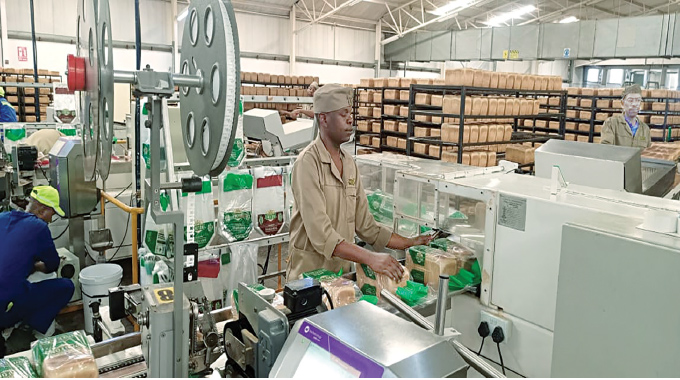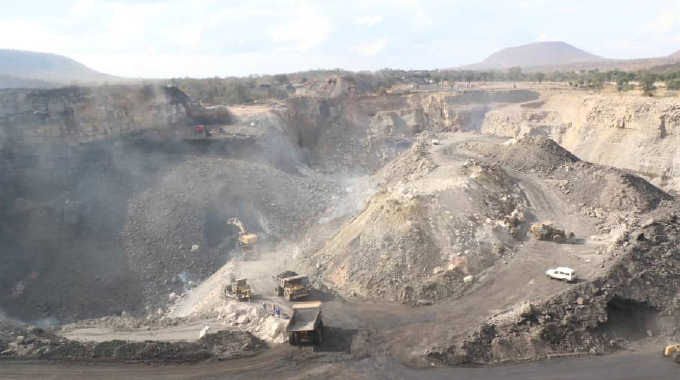Why kombis burst tyres on rear left
THIS week, Obel — a brand with a tender passion for engines — wishes to focus on why most cases of tyre bursts with respect to commuter omnibuses now commonly referred to as “kombis” invariably occur on the left rear side.
(Incidentally, the original Kombi minibus was manufactured by the German vehicle makers of the Volkswagen (VW). In Zimbabwe, other makes of minibuses, particularly of Japanese manufacture, soon joined the VW Kombis — but the name stuck.)
Can we attribute this to any possible technical reason? We are not inferring that only the so-called kombis have this problem on the road.
Our only interest is that there has been an increase in such accidents. In addition, most of these vehicles provide a vital public service. With all due respect, such accidents invoke bitter and painful memories and the tragic sight at that moment inhabits one’s mind.
It’s mind-boggling. Several such accidents have been reported. But we have chosen to focus on commuter omnibuses only for this purpose.
The question we are attempting to answer was raised by one of our readers who asked us to respond. We have never focused on this aspect in our previous articles when we discussed engines and vehicles.
The so-called kombis are generally designed for seven or possibly nine passengers. The seating arrangement is three passengers to a row. There would be a total of nine passengers with the average weight of 75kg a person.
This is very common with tour operators’ minibuses. But most kombis have four people seated in one row, with at least a total of four rows and a makeshift one facing inside, with a possible total number of 18, excluding the conductor and the driver.
We are aware of efforts by the VID to enforce the adherence to this seating arrangement.
Now, we wish to focus on the possible cause of the tyre bursts as observed by the reader. We can only offer the following:
When vehicles are manufactured, there is a certain built-in central configuration. Some have 60:40 ratio or 40:60 ratios for front and back and this is to minimise stress.
So, as these vehicles were manufactured to suit that load, there emerges a distortion when there is an alteration of this configuration. The seating capacity is raised with no due regard to the manufacturer’s specifications.
In fact, there would be a need to redesign the whole suspension system. As a result of the absence of a redesigned suspension system, we believe that this non-technical alteration has tended to create the weak link on the left side of the rear wheel. It thus becomes the structural fault which probably explains why this results in the accidents.
If you look at the Mazda BT-50, 4×4 you will notice that it stoops at the front with the back rising. This is typically a ratio angle and hence the suspension is therefore designed that way — to cater for the engine and the body weight.
Assuming the suspension weight is 1 500kg with a load of 750kg, this means it has a carrying capacity of 2 250kg.
Using this illustration we can say the suspension is 1 500kg and was meant for seven passengers with an average weight of 75kg. This translates to 525kg. The gross mass would be 2 025kg and the central gravity, as per design, was at the centre and that the sitting arrangement being for a specified number.
You then add an additional sitting capacity of 11 people who have an additional load of 825kg. This has a tendency of altering the stress of the suspension.
This is because the added seating arrangement was not catered for, hence the weaker position invariably seems to tilt to the left side of the rear wheel.
This is what we believe is the cause of this weak area. There is simply no recognition being made to the manufacturer’s specifications.
In most cases, such kombis are vans which are then converted.. From a non-technical review, suspension plays a pivotal role as it keeps the tyres in constant movement with the road, assisting the driver to control the vehicle. It also offers a cushion to the passengers on bumpy roads.
This takes into account many parts that are involved, for the rear suspension is made up of coil spring, shock absorber, driveshaft, universal joint, differential casting and trailing arm.
For the front, it could be brake assembly unit, steering rack, driveshaft, lower arm and the sub-frame.
Hence, manufacturers in designing this have the angle rations mentioned earlier which is now ignored when alterations are made haphazardly.
These suspensions are properly planned and cater for proper weight and these parts are carefully mounted, so that hence any alteration can result in the tyre burst mentioned above.
We pursue this as we believe the engines are driven by wheels and tyres, hence our concern. We offer the following titbits on attempts to reduce these accidents on matters relating to tyres.
You will note several markings on the tyres, such as 245/70/R16. This is not jargon, but a “must” for you to know.
You must make an effort to get details from the supplier of these tyres and acquaint yourself with the manufacturer’s specifications.
Looking at 245/70/R16, the number 245 refers to the width of the tyre in millimetres. So, in this instance, the correct interpretation is 245mm.
The number 70 is indicative of the aspect ratio of the tyre section being height to width as a percentage and denotes the height of the tyre measured from the rim expressed as a percentage of the width.
R means its radial ply construction and 16 means the tyre diameter in inches. Problems encountered in our survey that contribute to tyre bursts were:
(a) Recently imported tyres which are shipped on “roll on” — this being an open sea carrier.
When tyres are subjected to salt water and weather during the sea voyage they tend to harden or crack.
These tyres are never changed and form at least 80 percent of tyre bursts. Note that they would have travelled close to 1 861km from Durban to Harare.
(b) You will find a minibus that should have size 13 is fitted with a size 15, hence there is no stability in the vehicle which is prone to accidents.
(c) Most radial tyres have additional markings for specifics such as “P” is for speeds up to 120km/h
Q is for speeds up to 160km/h, R is for speeds up to 170km/h, S is for speeds up to 180km/h, T is for speeds up to 190km/h and U is for speeds up to 200km/h. These markings are never checked and complied with by our kombi drivers. As a society, we should help and not engage in mere blame game but offer awareness for the betterment of humankind.
For more details on this refer to your manufacturer’s guidelines. The other aspect for tyres is that they are normally made for the cold weather and not for our weather. It could therefore be beneficial to select from locally produced Zimbabwean tyres as a solution. When filling pressure you must recognise that.
Check pressure when tyres are cold because when they are hot they tend to exceed their normal pressure, as air expands due to heat. So do not release pressure from hot tyres.
Under-inflating causes uneven and poor sealing of the tyre tread, which will deform the wheel and cause separation of the tyre from the rim, whereas overinflating will produce a rough ride, uneven and accelerated tyre wear and potential for damage on our roads.
But abnormal wear could be a function of improper wheel alignment, out of balance wheel and severe braking practices.
Therefore, use the same size and designated type of tyres for your vehicle to enhance the lifespan of the wheel and bearing life, ground clearance, speedometer calibration, headlight aim and bumper height.
Let’s meet next week for more titbits from the brand with a tender passion for engines.
l Contact us on the above numbers, address or G. Mbeya via email [email protected] or cellphone 0774215505.
PROUDLY ZIMBABWEAN.









Comments